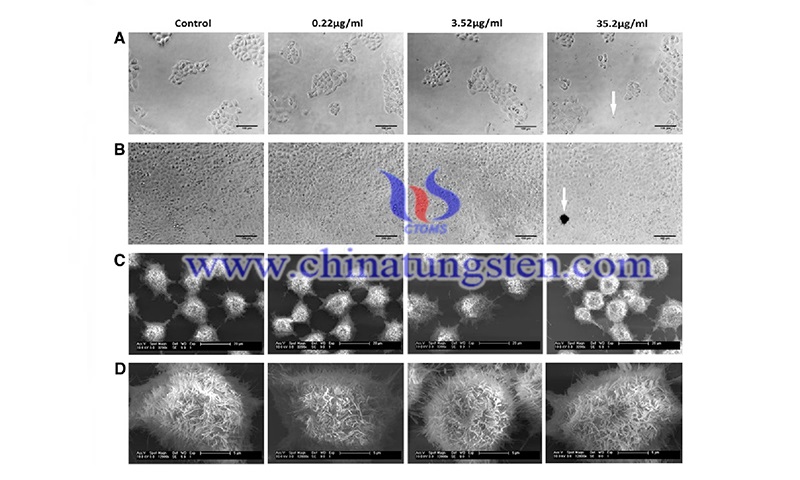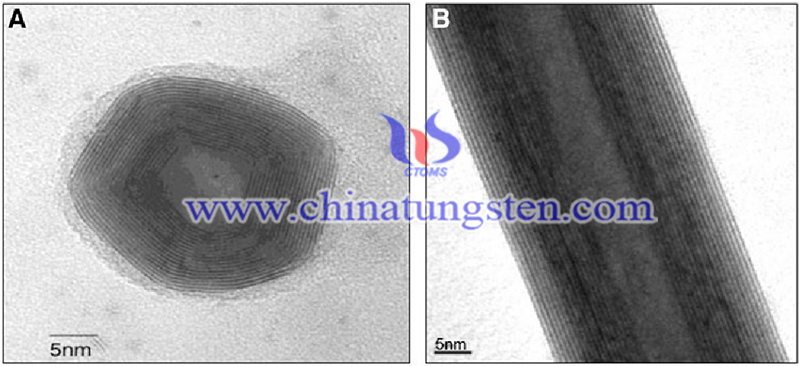Biocompatibility of Tungsten Disulfide Nanomaterials
- Details
- Category: Tungsten Information
- Published on Wednesday, 17 August 2022 23:14
Biocompatibility of tungsten disulfide nanomaterials (WS2NM) such as tungsten disulfide inorganic nanotubes, and fullerene-like nanoparticles with salivary gland cells. There are currently no adequate methods to treat oral diseases due to impaired salivary gland function. The researchers investigated the biocompatibility of WS2 in salivary gland cells. In the study, multi-walled inorganic nanotubes (INT- WS2) and inorganic fullerene-like nanoparticles (IF WS2) were synthesized in a reactor that can be used at high temperatures.

(Picture source: Fei, W/Tissue Engineering)
Tungsten disulfide nanoparticles have an average particle size of 40-80 nm and a surface area of up to 80 m2/g. This gray powder of tungsten disulfide nanoparticles is of great importance in several industries and is widely used as a hard lubricant. It is also used as an additive to metal powders to achieve a stable coefficient of friction.
In 1985, a new isomer of carbon with a stable 60-atom molecule was hotly discovered and labeled "fullerenes". Strong interest in the unique physical and chemical characteristics of fullerene-like nanoparticles (IF-NP) has driven the development of inorganic fullerene-like nanoparticles. These potentially unstable structures can bend and close in on themselves under certain circumstances, leading to the attachment of edge atoms and resembling graphite, while producing particles ranging in size from 20 to 200 nm. The identification of such molecules has triggered the investigation of other potential carbon structures.
The toxicity of A5 and RSC cells to INT- WS2 and IF- WS2 was evaluated at different concentrations of 0.22 μg/ml to 35.2 μg/ml and 35.2 and 100 μg/mL for both groups, respectively. The two cell lines showed no significant differences in kinetics, proliferation, survival, and morphology, and the particles appeared in the cytoplasm of the cells rather than in the nucleus, surrounded by a membrane, making such particles biocompatible for medical applications.
The preparation of stable and biocompatibility nanomaterials and nanocomposites for drug delivery is a fundamental challenge in nanomedicine. Providing novel and safe nanomaterials with drug delivery capabilities is an important issue in medical nanotechnology. Nanomaterials related to WS2 appear to be suitable candidates for this purpose.

(Picture source: Fei, W/Tissue Engineering)
Niknam S., Ahmad Dehdast S., Pourdakan O., Shabani M., Kazem Koohi M. Tungsten Disulfide Nanomaterials (WS2NM) Application in Biosensors and Nanomedicine, A review. Nanomed Res J, 2022; 7(3): 214-226. DOI: 10.22034/nmrj.2022.03.001
- Tungsten Manufacturer & Supplier, Chinatungsten Online: www.chinatungsten.com
- Tungsten News & Prices of China Tungsten Industry Association: www.ctia.com.cn
- Molybdenum News & Price: news.molybdenum.com.cn
- Tel.: 86 592 5129696; Fax: 86 592 5129797; Email: sales@chinatungsten.com



 sales@chinatungsten.com
sales@chinatungsten.com